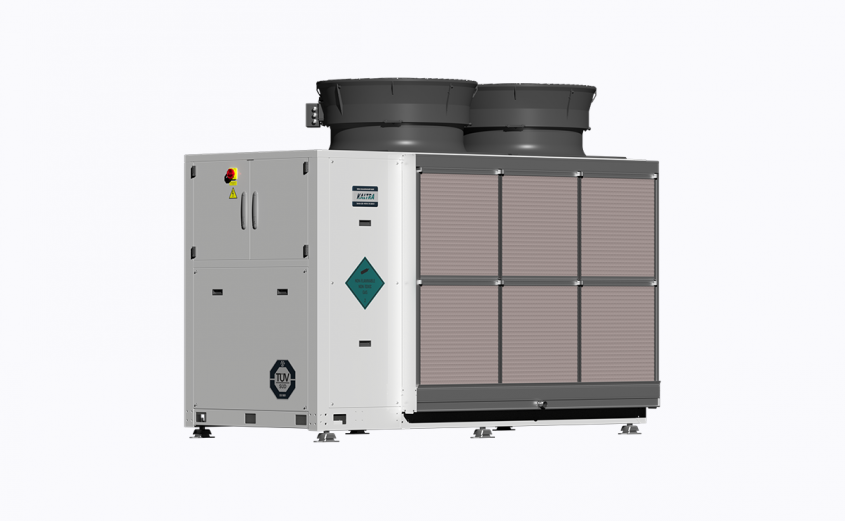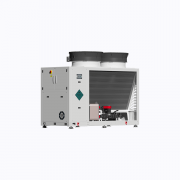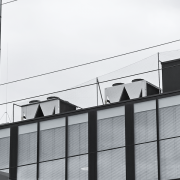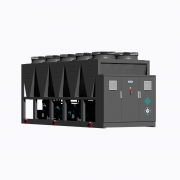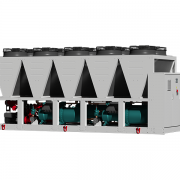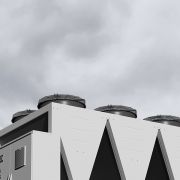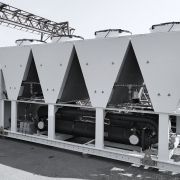Enhancing air-cooled chiller performance with evaporative cooling
Amount of electrical power consumed by cooling systems in energy-intensive industries like data centers and manufacturing plants is huge, especially in hot climate locations, and this fuels the development of new, energy-efficient cooling solutions and equipment for mission-critical applications. One of the more promising solutions is evaporative cooling combined with the conventional compressor-based system.
Since the performance of the evaporative cooling system depends highly on environmental conditions, mechanical backup still unavoidable in mission-critical applications but its run time and, by extension, its energy consumption within such hybrid cooling solution can be reduced dramatically. The synergy of vapor-compression refrigeration and evaporative cooling makes it possible to convert the conventional air-cooled or free cooling chiller into a reliable and highly efficient cooling solution, suitable for any climate, including extremely hot and humid locales. It is noteworthy that evaporative system can be used to retrofit existing chilled water plants, without the need to redesign the entire cooling infrastructure.
An evaporative cooler (also referred to as adiabatic cooler or wet air cooler) is a device that cools air through the evaporation of water. The ambient air is humidified and cooled down by passing through wet pads which are set in front of the heat rejection coils. Air is thus delivered at a lower temperature to the free cooling and the condensing coils, thus achieving higher free cooling capacity and more efficient compressor operation. The evaporative unit can be automatically switched on and off depending on ambient conditions. A significant advantage of evaporative pads over the water spray system lies in the possibility of recirculating water, and, as a result, it’s saving.
Kaltra’s latest generation air-cooled and free cooling chillers with integrated E•VAP™ evaporative cooling system demonstrate all the benefits of hybrid cooling concept. E•VAP™ system is based on the corrugated, water-retaining aluminium evaporative pads whose key advantages over cellulose-based evaporative media are:
- High saturation efficiency of up to 90%
- Long service life
- No need in regular cleaning
- Low pressure drop
- Bacterial protection
Depending upon weather conditions, the evaporative cooling system can significantly decrease the temperature of the air entering the heat rejection coils (Figure 1).
Figure 1: Evaporative cooling performance
Evaporative chillers are able to operate in the following modes:
For free cooling chillers:
- Free cooling – the unit operates in free cooling mode at low ambient conditions, without engaging the compressors
- Adiabatic free cooling – evaporative cooling extends free cooling operation
- Hybrid cooling – adiabatic free cooling operating mode with backup compressor cooling
- Adiabatic mechanical cooling – compressor cooling with the assist of evaporative cooling system at high ambient conditions
For air-cooled chillers:
- Mechanical cooling – compressor cooling at low ambient conditions
- Adiabatic mechanical cooling – compressor cooling with the assist of evaporative cooling system at high ambient conditions
Efficiency improvements may vary depending on the number of hours the chiller runs in different cooling modes. Figures 2, 3 and 4 show the annual operating modes in Northern Europe, Southern Europe, and in the Middle East, respectively. For any of the above-mentioned locations, evaporative chillers demonstrate significantly higher efficiency values compared to those obtained with the legacy solutions.
The chiller controller manages the switching between operating modes according to the ambient temperature and humidity, thus realizing the most energy efficient cooling regime.
Figure 2: Annual operating modes: Northern Europe
Figure 3: Annual operating modes: Southern Europe
Figure 4: Annual operating modes: Middle East
As proven by a growing number of installation of evaporative chiller systems, the potential for energy saving from hybrid cooling is prominent, regardless of environmental conditions. Whether it is a cold or hot, humid climate, the operating cost benefits delivered by the evaporative chillers are substantial.

